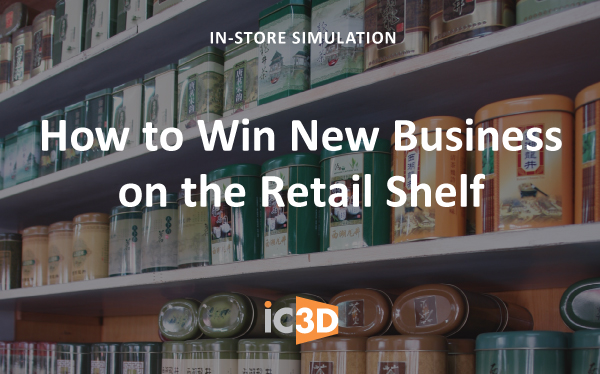The battle for “shelf awareness” is serious. It’s hard to win new business on the retail shelf. Shoppers have only seconds to scan each display packed with competing products. The best combination of brand familiarity and good design wins. A bad decision costs millions in sales.
So, how can companies make those decisions well? Focus group testing is a big advantage. But the cost of live design simulation and comparison is daunting—until now. While preparing an upcoming case study, we spoke with U.S.-based Cyber Graphics on their approach to this problem.
Cyber Graphics has been using iC3D since its launch a couple of years ago for creating digital packaging prototypes. This saves money (over physical prototypes) and accelerates their brand clients’ time-to-market. However, this advantage pales in comparison with virtual in-store simulation.
Proof of Concept
Among iC3D’s many features is the ability to create in-store 3D visualization of a product on a shelf next to its competition. The following video is only one example.
Cyber Graphics is now doing the same with its own major product line: flexible pouches.
A major manufacturer was considering using an entirely different color for one of its popular lines. But the company didn’t know the potential effect on consumer purchase behavior. Using iC3D, Cyber Graphics applied the new color to different designs. They positioned the results in different 3D mockups, along side competitive products. The results were shown to a focus group, to help the product team make an informed decision.
“There are so many ways this can be used,” according to Cyber Graphics’ Creative Director John Davis. “Our clients and partners are discovering new ways of using these 3D simulations to sell new product ideas.”
iC3D’s Shape Modeler feature lets Cyber graphics “build” a packaging model—even for a product that has not yet been manufactured. Davis is also excited about iC3D’S new ray-tracing feature, which will render virtual packages and in-store displays photo-realistically.
If a picture is worth a thousand words, in-store 3D simulations are worth much more. For the hyper-competitive consumer brand market, they can make all the difference in the world.






